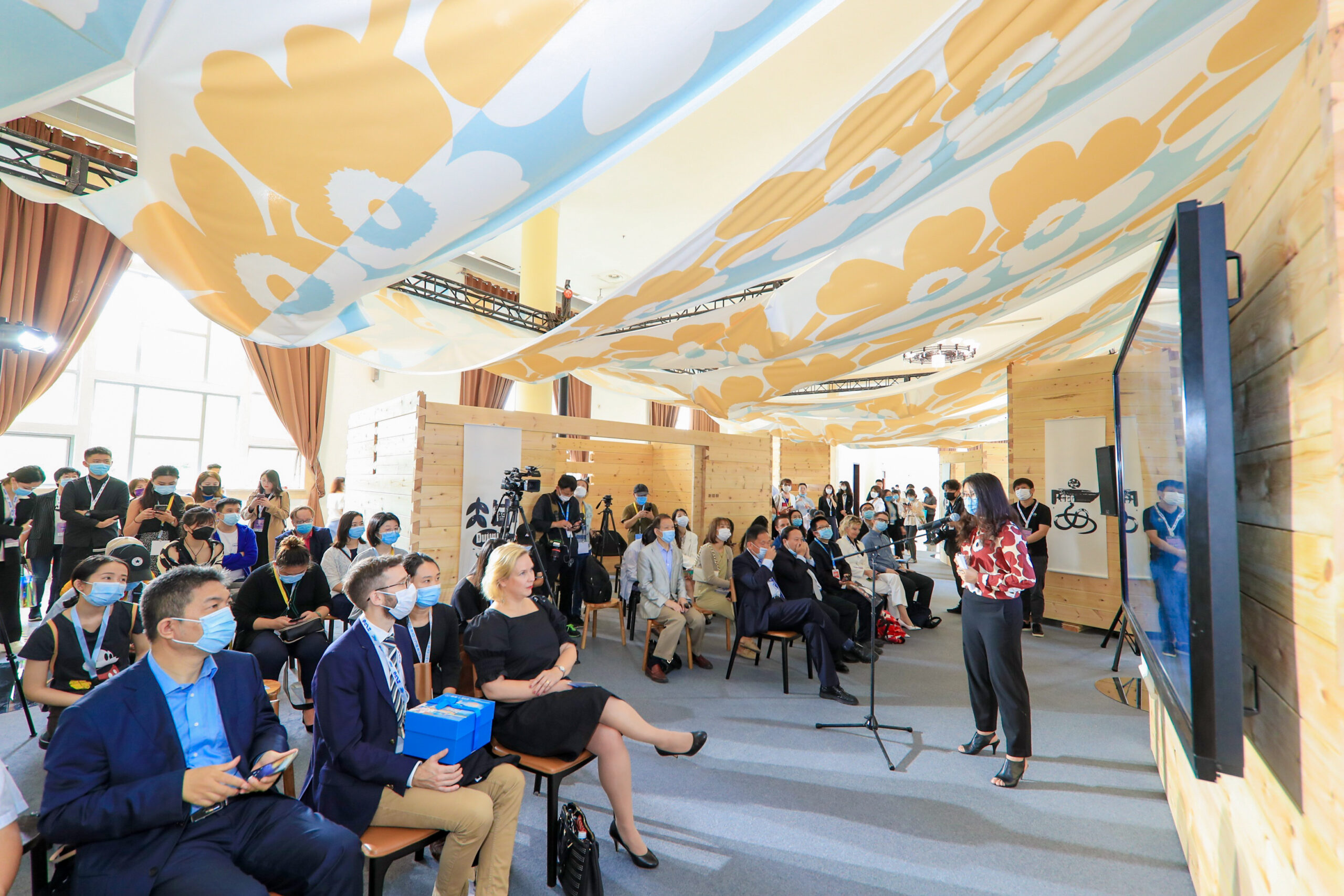
Helsinki presented smart and sustainable solutions at Beijing Design Week
In September, the elements of functional everyday solutions in Helsinki, our sustainable urban development and education innovations were highlighted by an installation and respective programme in the Beijing Design Week exhibition hall. In the spirit of the Helsinki themes, the materials and furniture included in the installation will be re-used after the festival.
The Beijing installation was curated by Luovi Productions, the producer and founder of Helsinki Design Week. During the largest design festival in Asia, our programme titled Designing Better Life presented design thinking in Helsinki from the point of view of sustainable urban development and smart innovations.
“The Beijing Design Week, too, sets strict criteria to its theme cities, and thereby Helsinki gained ground on an appropriate international framework. The world political situation has led to cities often having more leverage than states. Therefore, it is important for the citizens of Helsinki and Beijing to engage in dialogue. Thanks to our Guest City status, this was made possible,” says Luovi Productions CEO Kari Korkman, who is one of the founders of the World Design Weeks network.
Part of Helsinki’s programme was organized in a virtual or hybrid format in The Recipes for Happy Helsinki Home installation designed by JKMM Architects for Beijing.
The philosophy of JKMM Architects is to create meaningful buildings and space, the infrastructure of happiness. The Recipes for the Happy Helsinki Home installation fit in with this thinking. Festivals such as Beijing Design Week and Helsinki Design Week bring together potentially significant communities at their best,” says Päivi Meuronen, JKMM Architects’ creative partner and leading interior designer.
Helsinki’s expert seminars included presentations about sustainable and smart urban solutions and education-related innovations. In addition, the installation hosted some Design Diplomacy discussions as well as workshops for both children and families. All in all, the Helsinki programme during the Beijing Design Week attracted more than 10,000 visitors on location and online.
“We have been extremely honoured and happy for Helsinki to be included as a Guest City for this year’s festival. It was marvellous to note that our programme was of great interest to the Chinese visitors and the professionals targeted by the seminars. The objective of the Helsinki Guest City project was to enforce cooperation between the two cities and create new international opportunities for the participating companies. Taking into account the restrictions caused by the covid pandemic, the Guest City programme was a success and the participating companies gained plenty of visibility,” says Director of Economic Development for the City of Helsinki Marja-Leena Rinkineva.
“Ten companies were selected to present the latest sustainable urban and education innovations in the Helsinki Guest City seminars. The Chinese participants’ interest in cleantech increased, and we have received requests for information concerning energy expertise and charging electric vehicles, for example. I believe that participating in the Guest City programme was a great opportunity to trigger new collaboration and business for the companies from Helsinki,” says Helsinki Business Hub CEO Miska Hakala.
What happens next? The materials and furniture used in the Helsinki installation will live on in China. Sustainability now and in the future was addressed in the themes of the Helsinki Guest City programme and, for example, the presentations for the Smart & Sustainable City seminar as well as in practice in the design and materialization of the Helsinki installation.
The idea was to keep the installation’s carbon footprint minimal. The installation featured print fabric by Marimekko and log panels by Wood from Finland which were not shipped from Finland for the occasion but taken from an existing deposit in China. The furniture for the installation was made by a partnering Chinese workshop.
After the festival, the furniture and materials will be re-used. Some of the 200-metre Marimekko fabric will be donated to the Finnish Embassy in Beijing, and some of it will be re-used by the students of the Tsinghua University Academy of Arts & Design.
The stools designed by JKMM Architects will be donated for further use, too. Some of them will serve a children’s art project in the city of Zhengzhou, and some will be given to the volunteers and local employees that helped with the Helsinki Guest City project. Other furniture left over from the installation will be given to the Finnish architecture education concept for children and youth Arkki’s location in Beijing. Three out of the eight wooden cubes used in the installation will find new homes at the Beijing Design Week organization’s offices in the Gehua Tower in Beijing. The rest of the log cubes will be useful at various local events, for example.
Chinese artist Pan Jianfeng created Chinese characters for each of the installation’s theme rooms. They consist of unique calligraphy for Forest, Knowledge, Rest, Sauna, Food and Work and will be re-used in the new building for the Finnish Embassy in Beijing to be completed in January 2022; its meeting rooms will be named with these characters.
“It is important to speak beyond sustainable development and corporate responsibility and pursue the Helsinki themes in practice to concretely support circular economy. I think it is wonderful that Helsinki’s Designing Better Life messages will live on in Beijing through the reuse of the materials and the furniture,” says Heidi Forss-Anila, who was in charge of the Guest City project at the Communications Division of the Helsinki City Executive Office.
The Beijing Design Week festival is organized by Beijing Gehua Cultural Development Group and Beijing Industrial Design Center. Before Helsinki, the Guest City status has been given to nine cities; lastly to Mexico City in 2019. In 2022 the Guest City will be Paris.